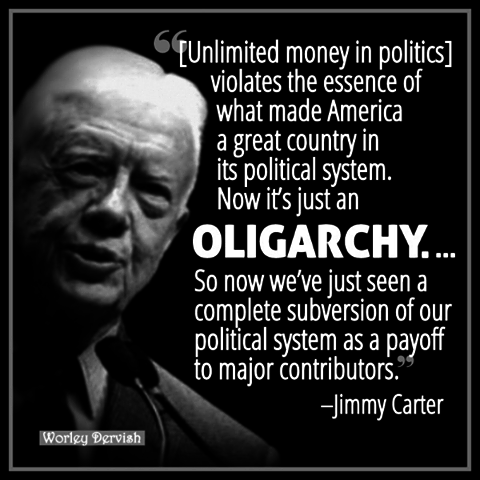In the history of every challenge to entrenched political power, a time arrives when the challenger is accused of threatening behavior, violating norms or violence. There is a natural dynamic driving such accusations.
The authorities, by definition, control rule-making and rule-implementation. They can deploy state security (or in certain cases private security forces) secure in the view that this will be seen as a legitimate use of power to “maintain order”. The very act of challenging the present order leads to accusations of fomenting disorder.
Most of us are accustomed to giving the benefit of doubt to a uniformed force and the agents of authority. We are predisposed to view disgruntled citizen-protesters as a rabble or mob.
The criticism of challengers/protesters comes in two forms:
- Attempts to conflate a broad non-violent movement with violent groups who may or may not espouse the same goals (or look the same, scruffy, poor, brown).
- Attempts to hold leaders responsible for controversial words/actions used by anyone associated with the movement.
For example, Abolitionists were accused of condoning violence when some refused to unequivocally condemn John Brown. Every day of slavery was an orgy of violence inflicted on slaves, but this was the current order, and therefore unremarkable.
There was concern the American suffrage movement would adopt the “window-breaking” tactics of the British suffragette movement. British suffragettes eventually moved on to more extreme violence (including bombing and arson). Flipping a chair sounds pretty tame compared to that.
Gandhi was accused of encouraging riots and imprisoned for six years on this charge by the Bombay High Court. In arguing his case, the prosecutor said:
“Of what value is it to insist upon non-violence, if at the same time, you preached disaffection to the Government, holding it up as sinful and treacherous, and openly and deliberately sought and instigated others to overthrow it”
The prosecutor, good Christian though he was, may have forgotten that Jesus simultaneously asked his followers to turn the other cheek and threw the money-changers out of the temple. In his sentencing statement, the judge said to Gandhi:
“But having regard to the nature of your political teaching and the nature of many of those to whom it was addressed, how you can have continued to believe that violence and anarchy would not be the inevitable consequence, it passes my capacity to understand.”
If this sounds familiar, it should. The criticism leveled against Sanders by some on this site is along the same lines. It seeks to delegitimize dissent by labeling it incitement.
The American Civil Rights movement is a case study of such tactics on both sides. MLK was accused of inciting violence, condemned for expressing empathy for rioters and subjected to surveillance. Isolated calls for violent protest, though condemned by many, were employed to discredit the entire movement.

The Trade Union movement in the US has seen violence directed at it, and elements within it have resorted to violence as well. In more recent years, concern has been expressed about confrontations associated with Black Lives Matter protests. Some observers seek to paint the entire movement as composed of rioters or claim it is a “war on cops”. One end result is to label it a “controversial group” (see right). BLM supporters have pointed out the civil rights movement also relied on creating violent confrontations with authority.
You can find similar threads running through criticism of the American Indian rights movement, the Palestinian civil disobedience movement and indigenous rightsmovements in various other parts of the world. Of course, the Democratic convention of 1968 is a similar case. Bill Clinton’s Sister Souljah moment was a variation on this theme, and used to undercut the Rainbow coalition. The last is quite an interesting case, since it reminds us that Bernie Sanders has seen this tactic used by another Clinton to undermine a movement he associated himself with.
The actual cause or movement may be small, or big. The dynamic of challenger and challenged is the same. In general, the goal of entrenched power in these cases is to create distaste for the challenger, by branding them or their methods as “unacceptable”:
- You may mean well, but the way you’re going about it is wrong (we will set the terms of debate)
- Now is not the time, we have more urgent matters (we will set the priorities)
- What you’re suggesting is not achievable (we will define the overton window)
- If you don’t accept our authority you’re giving cover to violence (give up now)
- You’ve had some success, we’ll take over now (know your place)
- etc. etc. etc.
To those who have followed the history of protest movements and political challenges, this is all quite predictable. To those who haven’t, you have just seen it in action.
It comes as no surprise to me that Bernie and his supporters are being accused of intemperance, lack of discipline and even violence. I am not upset by this, it is to be expected that “chair flipping” and “curse words” at a heated state convention would morph into wall to wall coverage of “chaos” and “melees”. As if there were people running around with broken bottles, brass knuckles and switchblades in Las Vegas.
The reactions of all parties concerned have been as expected. Senior Democrats who hold significant power are unaccustomed to being challenged Certainly not in public, and certainly not by the hoi-polloi who hold no power with the two-party system. Harry Reid runs a tight ship in Nevada, I doubt anyone in the Nevada Democratic party has even walked out of a meeting in a huff in recent years. So the sights and sounds of chants, curses and “chair flipping” engender the same response as the sight of a Visigoth horde on the Strip.
Curiously, Nevada had a similar “controversy” during the first round caucus. Sanders supporters were accused of “shouting down” a live Spanish translation. It later emerged they had been shouting for a neutral translator, and objected to high-profile Clinton surrogate Dolores Huerta serving as translator while wearing in a Clinton t-shirt. The initial version of events advanced was that civil rights icon Dolores Huerta had been shouted down by “BernieBros” and Spanish participants denied a translation. Who has time to understand what they were actually asking.
It’s tough for me to get worked up over heated words or curses by some person somewhere. Ours is a big country that has many passionate and stupid people in it. As was ably demonstrated in another diary, in 2008, some passionate supporters of Hillary Clinton also indulged in cursing and invective. In Nevada this year, Hillary supporters have gotten quite heated as well.
But hypocrisy never goes out of style in politics:
That was then, today, continuing the campaign means Bernie is “willing to do harm”.
Thankfully, Bernie is well prepared for all this. If you have spent any time on the left, as part of various struggles for equal rights, all of this is very familiar. Bernie came into this primary with an understanding of the history of protest and challenge, so there are no surprises for him here. His message discipline has been virtually flawless, his consistent advocacy of non-violence has been rock-solid, and he has avoided the trap of apologizing for things he has no control over.
This is a vigorous campaign to determine the nominee, and secondarily a platform. It should continue for now.
PS. Quite predictably, camp Clinton seems unaware of the implications of leveling such allegations against Bernie’s supporters. Come July, Democrats will be running against Trump, who has actually incited and abetted violence. In August, when Hillary brings Trump’s behavior up, he will be ready to remind folks that it is what Hillary and her surrogates were accusing Bernie of a few weeks earlier.
Secondarily, if Democrats believe they want to go into November with Bernie voters alongside them, it’s probably best not to spend part of the summer equating them with Trump supporters. That will be remembered in October when Hillary’s surrogates are in full-scale Trump supporter vilification mode.
—








